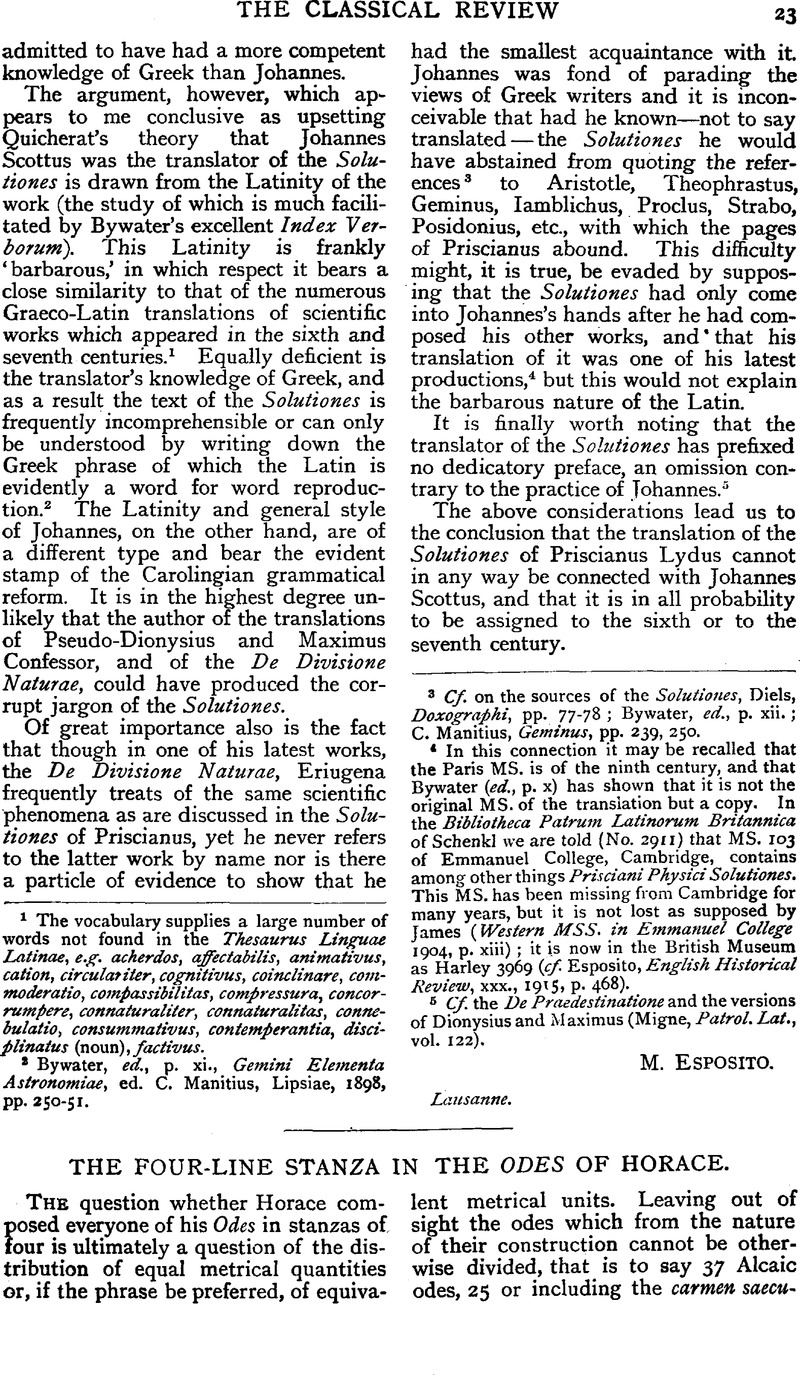No CrossRef data available.
Article contents
The Four-Line Stanza in the Odes of Horace
Published online by Cambridge University Press: 27 October 2009
Abstract

- Type
- Original Contributions
- Information
- Copyright
- Copyright © The Classical Association 1918
References
page 25 note 1 For the meaning of ‘biform’ and 'triform see p. 26.
page 26 note 1 If we exclude the carmen saeculare, the ratio is 13 out of 160.
page 26 note 2 I use ‘biform’ and ‘triform’ for the stanza according as it has two or three metrically different components. It will be noticed that both of the ‘triform’ stanzas have a higher proportion of overrunnings than the ‘biform.’
page 26 note 3 This had to be pointed out inasmuch as in the Introduction to Kiessling's Horace (ed. of 1901) it is actually contended that overrunning an argument for a four-line stanza.




